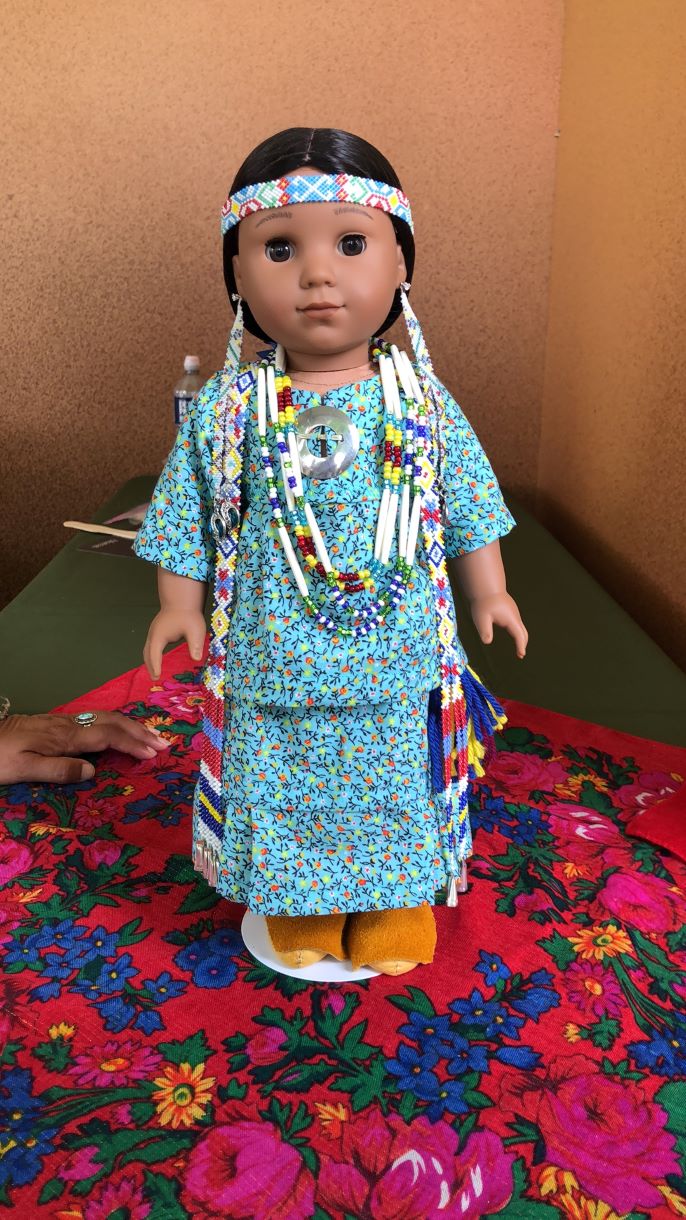It is summertime in Washington D.C. and one of the most cherished traditions of the nation’s capital is back: the Smithsonian Folklife Festival. With the U.S. Capitol building in the backdrop, the festival comes to life for two weeks in July on the National Mall, and never fails to inspire and astonish those who visit it. While the scaffolding on the Capitol remains a visible and painful scar of the January 6 insurrection, this festival is like a healing balm that soothes the heavy heart of the nation.
This year the festival celebrates diverse American cultures through two programs: Creative Encounters: Living Religions in the U.S. and The Ozarks: Faces and Facets of a Region. “In a way we are returning to the roots of the organization because it started out as the festival of American folklife,” explains Rebecca Fenton, co-curator of the Creative Encounters program at the Folklife Festival. Fenton defines folk life as, “the things we do together and teach one another at the grassroots level, not necessarily the things we learn in school or in a formal way.”
Festival organizers explain that religion, faith, spirituality, and ethical humanism are important sources of creativity and meaning for many Americans. The outcomes of reflection and service are crafts, food, music, dance, and storytelling. These can foster deeper understanding and engagement. However, they can also fuel social disruption, competition, and antagonism. The goal of “creative encounters” is to meet in conversation, generate new ideas, and grow together as human beings.

“We wanted to prime people to meet one another in some kind of way,” says Fenton about the Creative Encounters program. “When two people from different perspectives come together and something more, something greater comes out.” Faith inspires many positive and creative endeavors represented here, from mandala making and calligraphy to grassroots initiatives that promote food justice. Addressing food insecurity is Chris Battle’s mission as a pastor and the founder of Battlefield Farm in Knoxville, Tennessee, one of many participants in the Creative Encounters program.
As I floated around the festival, I had my own “creative encounter” with chef Elena Terry, and other members of the Ho-Chunk Nation in Wisconsin. Terry is the founder of Wild Bearies, a nonprofit organization that builds stronger tribal communities around the healing power of seed-to-table food. I was lured to their booth by their community garden and a stunning doll dressed in native clothing. Reclaiming culture to promote community health is part of their holistic vision.
The second program of the festival focuses on the Ozarks, an area that stretches across portions of Missouri, Arkansas, Oklahoma, Kansas, and Illinois. The name Ozarks has its historic origins in how Native Illini peoples referred to their southern neighbors who dwelled in the lands where the Arkansas River empties into the Mississippi River. This is a part of the United States that is often poorly understood, yet is rich in cultural traditions that reflect interactions between long-established populations and new immigrants, urban and rural communities.
The prevailing narrative is that “the Ozarks are isolated, monolithic, and all the same,” says Rachel Reynolds (photo), a folklorist, a fiddler, and a pie champion from Stone County, Arkansas. “Truth is that it has always been a story of in-migration and out-migration. From the First Nations people, we had folks who came into the Ozarks and folks who left. This festival is the first telling of that inclusive story, and a great opportunity for all Ozarkers to come together.”
This explains why in the Ozarks section of the festival there is a Hmong farming booth and a Marshallese crafts booth. The Hmong are an ethnic group in East and Southeast Asia, who fled war and persecution in the mid 70s. Many resettled as political refugees in Minnesota and Arkansas, where they continued their farming traditions or worked in the poultry industry. The largest population of Marshall Islanders outside of Hawaii is in northwest Arkansas, where they retain many distinct cultural traditions like basket weaving, bead work, and jewelry making.

“This is a space for us to tell the Ozark story inclusively, which has never been done before. We are people from different cultures, within a shared culture,” says Reynolds. “We are hanging out and learning that we appreciate and identify with the same things. There have been wonderful conversations, and musical collaboration is happening.”
Festival curators are intentional about fostering this type of exchange. “We are making public programs for an external audience, but the group of participants is also an audience to reach and serve,” says Fenton. This is happening also through the narrative stage, where conversations and discussions are scheduled every hour of the day on a whole range of fascinating topics that span foraging, guitar making, muralism, herbalism, and more. Some of these conversations are spontaneous and the result of chance encounters among visitors and participants at the festival, which is something that cannot happen over Zoom.
So, if you plan a visit to Washington D.C. next summer, make sure you do it around the time of the Folklife Festival and set aside some evenings for free concerts on the National Mall. “There is a lot that happens at the festival that you cannot predict ahead of time because people who don’t know each other meet and inspire one another. The Folklife Festival fosters community and brings people together in a spontaneous way. This is what is so special about it.” It is also what America desperately needs.












